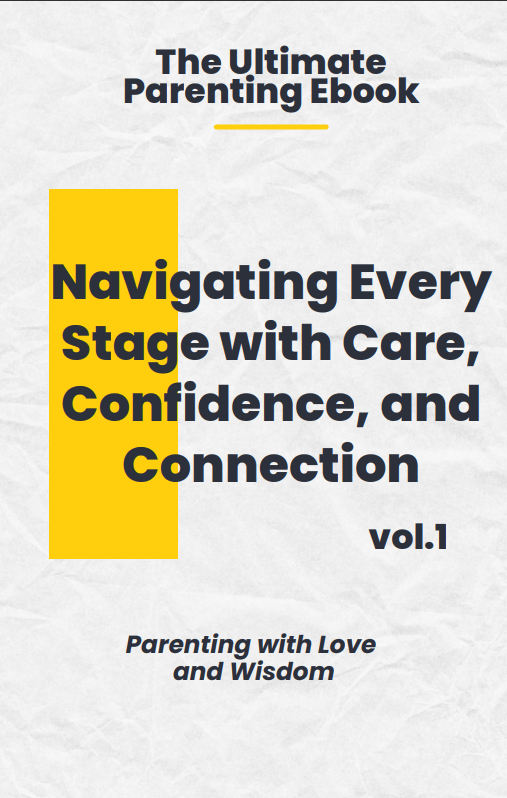Master parenting a neurodivergent child with 20 actionable solutions. Discover practical tips and strategies to help your child thrive. Learn more now.

Did you notice your child has difficulty making friends, struggles with loud noises, or gets fixated on specific topics? Are you constantly worried about their behavior and wondering if it’s something more? If these questions keep you up at night, you’re not alone.
Parenting a neurodivergent child can feel overwhelming, especially when you’re unsure of what you’re dealing with. According to the CDC, about 1 in 54 children in the United States are diagnosed with autism spectrum disorder, and 7 million children have ADHD. These numbers highlight how common neurodivergence is and the importance of understanding how to support your unique child.
In this guide, we’ll explore what it means to be neurodivergent, identify common signs, and provide 20 actionable strategies to help you thrive in parenting a neurodivergent child.
In This Blog
Toggle1. What is Neurodivergent Parenting?
Neurodivergent parenting involves raising children who exhibit variations in neurological development, such as autism, ADHD, dyslexia, and other conditions. These differences are not deficits but variations that bring unique strengths and challenges to your child’s life.

As a neurodivergent parent, you must embrace these differences and understand that traditional parenting methods may not always apply. Your approach needs to be flexible, creative, and tailored to your child’s specific needs. This might mean developing new routines, seeking specialized resources, and advocating for your child’s unique requirements in educational and social settings.
2. What is a Neurodivergent Child?
A neurodivergent child is one who experiences differences in brain function and structure, leading to variations in how they think, learn, and interact with the world. These differences can manifest in various ways, depending on the specific condition. For instance, a child with autism might have an intense focus on specific interests and find social interactions challenging, while a child with ADHD may struggle with maintaining attention but show exceptional creativity and energy.

It’s crucial to recognize that neurodivergence is not a one-size-fits-all label. Each neurodivergent child is unique, with their own set of strengths and challenges. Some children might excel in areas such as music, art, or math, displaying extraordinary talents, while others may need more support in everyday tasks like organizing their schoolwork or managing sensory overload.
For example, a child with autism might develop an extensive knowledge of a particular subject, such as dinosaurs or space, often becoming an expert at an early age. Recognizing and nurturing these interests can boost their confidence and provide them with a sense of accomplishment. Similarly, a child with ADHD might struggle to focus on traditional school tasks but excel in hands-on activities, where their energy and creativity can shine.
By identifying and nurturing these unique traits, you can help your neurodivergent child thrive and build a life full of possibilities. Recognizing their individuality and working with their strengths is key to effective parenting neurodivergent child.
3. Pros and Cons of Neurodivergent Parenting

Pros of Neurodivergent Parenting
Parenting a neurodivergent child comes with its own set of pros that can make the journey rewarding:
1. Celebrating Individual Differences: Your neurodivergent child may have remarkable talents that make them stand out. For example, they might have a photographic memory or an exceptional ability to solve puzzles, which can be both fascinating and a source of pride.
2. Building Resilience and Empathy: The challenges you face as a neurodivergent parent often lead to developing a deep well of patience, resilience, and empathy, not just in yourself but in your child as well.
3. Enhanced Problem-Solving Skills: You’ll become adept at thinking outside the box and coming up with creative solutions to help your child succeed.
Cons of Neurodivergent Parenting
While there are many positives, parenting a neurodivergent child also presents challenges that can be difficult to navigate:
1. Managing Social Stigma and Misunderstanding: It can be heartbreaking when others don’t understand or accept your child’s differences. You might encounter judgmental looks or insensitive comments.
2. Navigating Educational and Social Systems: Schools and social settings aren’t always equipped to handle the needs of neurodivergent children. You may find yourself advocating tirelessly for the right support.
3. Emotional and Physical Exhaustion: The constant demands of neurodivergent parenting can lead to burnout, making self-care crucial.
4. How Do I Know if My Child is Neurodivergent?
As a parent, you may wonder if your child is neurodivergent. Recognizing the signs early can make a significant difference in how you support them. Here are some typical signs and symptoms to watch for:

- Delayed speech or language skills: Your child might take longer to start speaking or have difficulty forming sentences.
Example: Instead of using full sentences, your child might rely on single words or gestures to communicate, which could be a sign of speech delay or another form of neurodivergence.
- Difficulty with social interactions: They might find it challenging to make friends or understand social cues.
Example: Your child may struggle with understanding sarcasm or reading facial expressions, which can lead to misunderstandings in social settings.
- Unusual levels of focus on specific topics: Your child may show an intense interest in a particular subject, sometimes to the exclusion of everything else.
Example: A neurodivergent child might be able to recite every fact about their favorite topic, such as trains or animals, but have difficulty following a broader curriculum in school.
- Sensory sensitivities: They may be overly sensitive to sounds, lights, textures, or smells.
Example: A child who is highly sensitive to loud noises might cover their ears at a birthday party or avoid wearing certain types of clothing because of the texture.
- Repetitive behaviors or routines: Your child may insist on following the same routine every day and become upset if it’s disrupted.
Example: Insisting on eating the same meal every day or needing to follow the exact same route to school can be common in neurodivergent children.
- Challenges in executive functioning: They might have difficulty planning, organizing, or completing tasks.
Example: Struggling to keep track of homework assignments or consistently forgetting to bring the correct materials to class could indicate issues with executive functioning.
- Emotional regulation issues: Frequent meltdowns or difficulty managing emotions can be a sign.
Example: A neurodivergent child might have a strong emotional reaction to minor changes in routine or environment, often feeling overwhelmed and unsure how to cope.
- High levels of creativity or problem-solving in specific areas: They might excel in creative or analytical tasks.
Example: Your child might be able to solve complex puzzles or create detailed drawings, showcasing strengths that aren’t always apparent in traditional academic settings.
- Difficulty with transitions or changes in routine: They might need more time to adjust to changes.
Example: A child might become anxious or upset when faced with an unexpected change, such as a substitute teacher or a last-minute change in plans.
- Struggles with motor skills: They may have difficulty with tasks that require fine motor coordination, like handwriting.
Example: Handwriting might be a challenge, with your child finding it difficult to form letters or write within the lines, which can be a sign of a motor skill delay.
- Intense interests in particular subjects: Your child might become deeply absorbed in one area of interest.
Example: A child might know everything there is to know about a particular subject, such as dinosaurs, but have little interest in other activities or subjects.
- Need for more time to process information: They might take longer to respond to questions or instructions.
Example: Your child might need extra time to process and respond when asked a question, often appearing to “zone out” as they mentally work through their thoughts.
- Tendency to miss social cues: They might not pick up on body language, tone of voice, or facial expressions.
Example: Your child may not recognize when someone is joking versus being serious, which can lead to misunderstandings or social challenges.
Identifying these signs and symptoms early can help you provide the right support and interventions for your neurodivergent child.
5. How to Parent a Neurodivergent Child: 20 Solutions with Examples
Parenting a neurodivergent child requires strategies that are as unique as your child. Here are 20 practical solutions, each with an example to help you implement them effectively:

1. Establish a Consistent Routine: Neurodivergent children often thrive on predictability. Establish a daily routine that designates specific times for meals, activities, and rest.
Example: Use a visual schedule with pictures to help your child understand the day’s structure. This can reduce anxiety by letting them know what to expect.
2. Use Visual Schedules: Visual aids can help neurodivergent children anticipate changes and feel more secure.
Example: A chart with pictures for morning routines can guide your child through getting ready for school, reducing the likelihood of morning meltdowns.
3. Create a Sensory-Friendly Space: Designate a calm area in your home where your child can retreat when they feel overwhelmed.
Example: A quiet corner with soft lighting, a comfortable chair, and noise-canceling headphones can provide a safe haven for your child to decompress.
4. Incorporate Calming Techniques: Teach your child relaxation methods such as deep breathing or guided imagery.
Example: Practice deep breathing exercises together before bedtime to help your child relax and prepare for sleep.
5. Use Clear and Concise Language: Simplify your instructions to avoid confusion.
Example: Instead of saying, “Clean your room,” say, “Put your toys in the bin,” breaking down the task into manageable steps.
6. Practice Active Listening: Show your child that you value their thoughts and feelings by listening attentively.
Example: When your child talks about their day, make eye contact, nod, and respond with affirming comments to show you’re engaged.
7. Encourage Communication Aids: Tools like picture cards or communication devices can help non-verbal children express themselves.
Example: A communication board with images for common needs like “food,” “bathroom,” and “play” can help your child communicate more effectively.
8. Collaborate with Teachers: Work closely with educators to develop an Individualized Education Plan (IEP) tailored to your child’s needs.
Example: Attend regular IEP meetings and provide input on your child’s strengths and challenges to ensure they receive the appropriate accommodations.
9. Utilize Assistive Technology: Tools like speech-to-text software can support your child’s learning.
Example: Use apps that convert spoken words into text to help your child with writing assignments, allowing them to focus on content rather than spelling.
10. Provide Hands-On Learning Opportunities: Engage your child in activities that involve touch and movement.
Example: Use building blocks to teach math concepts like addition and subtraction, which can be more engaging than traditional worksheets.
11. Use Positive Reinforcement: Reward desired behaviors with praise or small rewards.
Example: Give your child a sticker for completing homework on time, reinforcing the behavior you want to see more of.
12. Implement a Reward System: Create a system where your child earns points for good behavior that can be exchanged for a treat or privilege.
Example: Set up a chart where your child can earn points for tasks like brushing teeth or helping with chores, which they can trade in for extra playtime or a favorite snack.
13. Practice Patience and Remain Calm: Stay composed during challenging moments to help your child feel safe and understood.
Example: When your child is upset, speak softly and offer a comforting touch, modeling calm behavior that they can learn to emulate.
14. Arrange Playdates with Understanding Peers: Find friends who appreciate your child’s unique qualities.
Example: Organize playdates with children who are familiar with and accepting of neurodivergent behaviors, creating a supportive social environment.
15. Teach Social Skills Through Role-Playing: Practice common social interactions in a safe environment.
Example: Role-play scenarios like greeting someone new or taking turns in conversation, helping your child build confidence in social settings.
16. Use Social Stories: Explain various social situations through simple, illustrated stories.
Example: Create a social story about visiting a new place to prepare your child for the experience, reducing anxiety and helping them know what to expect.
17. Encourage Expression of Feelings: Use art or writing to help your child express their emotions.
Example: Provide drawing materials for your child to illustrate how they’re feeling, which can be a helpful outlet for emotions they may not yet have words for.
18. Provide a Safe Space for Retreat: Ensure your child has a place to go when they need to calm down.
Example: Designate a quiet area in your home where your child can go to relax and regroup when they’re feeling overwhelmed.
19. Offer Regular Reassurance and Validation: Frequently affirm your child’s feelings and experiences.
Example: Let your child know it’s okay to feel upset and that you’re there to support them, reinforcing their sense of security and belonging.
20. Join Support Groups: Connect with other parents of neurodivergent children to share experiences and strategies.
Example: Participate in local or online support groups where you can exchange tips and find comfort in knowing you’re not alone in this journey.
Conclusion
Parenting a neurodivergent child is both a challenging and rewarding journey. By understanding the unique needs of your child and implementing effective strategies, you can create an environment where they thrive. Remember, you are not alone in this journey, and there is a wealth of resources and support available to help you navigate it.

We hope this guide has provided valuable insights and practical tips for parenting a neurodivergent child. We invite you to share your thoughts and experiences in the comments section below. Your input can help other parents who are on a similar journey.
You may also be interested in : Positive Discipline for All Ages: 10 Strategies for Parents
FAQs
1. What is neurodivergence?
Neurodivergence refers to variations in brain function and structure, leading to differences in thinking, learning, and behavior, including conditions like autism and ADHD.
2. How can I tell if my child is neurodivergent?
Look for signs such as delayed speech, difficulty with social interactions, intense interests, sensory sensitivities, and challenges in executive functioning.
3. What should I do if I suspect my child is neurodivergent?
Seek a professional evaluation from a pediatrician, psychologist, or neurologist to obtain a diagnosis and recommendations for support and interventions.
4. How can I support my neurodivergent child at home?
Create a structured routine, use visual aids, provide a sensory-friendly environment, and practice patience and active listening to support your child’s needs.
5. What is an IEP and how can it help my child?
An Individualized Education Plan (IEP) is a customized educational program designed to meet your child’s unique learning needs, providing specific accommodations and support.
6. How can I manage my child’s sensory sensitivities?
Identify triggers and create a sensory-friendly space with tools like noise-canceling headphones, weighted blankets, and calming activities to help manage sensitivities.
7. What are some effective communication strategies?
Use clear and concise language, visual aids, and active listening. Encourage the use of communication devices or picture cards if needed.
8. How can I help my child develop social skills?
Arrange playdates with understanding peers, role-play social interactions, and use social stories to teach appropriate social behaviors and cues.
9. How can I deal with meltdowns and emotional outbursts?
Stay calm, provide a safe space for your child to retreat, and use calming techniques like deep breathing or guided imagery to help them regulate emotions.
10. What are some common strengths of neurodivergent children?
Neurodivergent children often exhibit strengths such as exceptional memory, creativity, problem-solving skills, and intense focus on specific interests.
11. How can I advocate for my child at school?
Work closely with teachers and administrators, participate in IEP meetings, and ensure your child receives the necessary accommodations and support.
12. What resources are available for parents of neurodivergent children?
Seek out support groups, online communities, and organizations that provide information, resources, and advocacy for neurodivergent children and their families.
13. How can I create a supportive environment at home?
Establish a consistent routine, use visual schedules, and create a sensory-friendly space where your child can feel safe and comfortable.
14. What role does positive reinforcement play?
Positive reinforcement, such as praise or rewards for desired behaviors, can help encourage and reinforce positive actions and progress.
15. How can assistive technology help my child?
Assistive technology, like speech-to-text software or communication apps, can support learning and communication, making it easier for your child to succeed.
16. What are some ways to manage academic challenges?
Use hands-on learning opportunities, provide organizational tools, and collaborate with teachers to implement strategies that cater to your child’s learning style.
17. How can I balance self-care while parenting a neurodivergent child?
Prioritize self-care by seeking support, taking breaks, and finding time for activities that recharge you, ensuring you can effectively care for your child.
18. What are some common misconceptions about neurodivergent children?
Misconceptions include viewing neurodivergence as a deficit or behavior problem. Understanding that it’s a different way of processing the world is crucial.
19. How can I help my child transition between activities?
Use visual timers, provide clear warnings before transitions, and establish a consistent routine to help your child adjust smoothly between activities.
20. How can I foster my child’s interests and talents?
Encourage your child’s passions, provide resources and opportunities to explore their interests, and celebrate their unique strengths and achievements.




